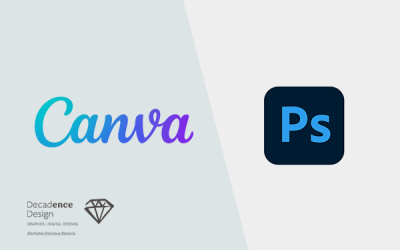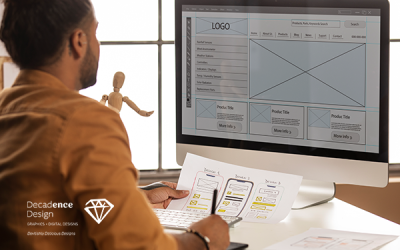In the ever-evolving landscape of marketing and branding, one element stands out as a potent force in shaping the perception of a company: the power of visual identity. Graphic design, with its myriad colours, shapes, and fonts, plays a pivotal role in conveying the essence of a brand to its audience. From logos to packaging to website layouts, every visual aspect of a brand is meticulously crafted to evoke specific emotions and associations. In this article, we delve into the profound impact of graphic design on brand identity and explore how it influences consumer behaviour and brand loyalty.
The Essence of Visual Identity
Visual identity encompasses all the visual elements that represent a brand, creating a cohesive and recognisable image in the minds of consumers. At the heart of visual identity lies the logo, a symbol that encapsulates the essence of a brand’s values, personality, and offerings. A well-designed logo serves as the cornerstone of brand recognition, instantly evoking associations and emotions among consumers.
Consistent Branding: Graphic Design Across Touchpoints
Beyond the logo, graphic design extends to various touchpoints of a brand, including marketing materials, product packaging, advertising campaigns, and digital platforms. Consistency across these channels is paramount, as it reinforces the brand’s identity and fosters trust and familiarity with consumers.
The Psychology of Design
Graphic design operates on a psychological level, leveraging principles of colour theory, typography, and visual hierarchy to communicate messages effectively. Colours, for instance, evoke specific emotions and associations; warm tones like red and orange can convey energy and passion, while cooler hues like blue and green evoke calmness and trust. Typography also plays a crucial role, with different fonts communicating varying tones and personalities, from sleek and modern to traditional and authoritative.
Layout Guides
Moreover, The arrangement of visual elements influences how information is perceived and processed. A well-designed layout guides the viewer’s eye, highlighting key messages and facilitating navigation. By understanding the psychology behind design choices, brands can create visuals that resonate with their target audience and elicit desired responses.
Building Brand Equity
A strong visual identity contributes to the development of brand equity, the intangible asset that encompasses consumer perceptions, associations, and loyalty towards a brand. Consistent visual branding fosters brand recognition, making it easier for consumers to identify and recall the brand in different contexts. This familiarity breeds trust and loyalty, as consumers gravitate towards brands they recognise and perceive as reliable.
Enhancing Brand Identity: Strategic Graphic Design
A cohesive visual identity sets a brand apart, communicating its unique value proposition and connecting with its audience. Through strategic graphic design, brands differentiate themselves, conveying their identity effectively.
Adapting to Changing Trends
In a fast-changing digital world, brands must adapt their visual identity to stay relevant. Graphic design trends, shaped by culture, technology, and aesthetics, influence consumer preferences. Embracing these trends helps brands stay modern, while ignoring them risks appearing outdated.
Balancing Innovation and Authenticity in Brand Identity
However, while it’s essential to stay current, brands must also ensure that their visual identity remains authentic and aligned with their core values. Striking a balance between innovation and consistency allows brands to evolve while maintaining their identity and resonance with their audience.
Graphic Design: Shaping Brand Identity and Loyalty
Graphic design is a powerful tool in shaping brand identity, influencing consumer perceptions, and fostering brand loyalty. From logos to marketing materials, every visual element communicates a brand’s values, personality, and offerings to its audience.
Psychology of Design
By understanding the psychology of design and staying attuned to changing trends, brands can create compelling visual identities that resonate with consumers and stand the test of time. In today’s competitive marketplace, the power of visual identity cannot be overstated—it is the cornerstone of brand differentiation and lasting consumer connections.
The Power of Visual Identity: How Graphic Design Shapes Your Brand
XML feed | All feed





